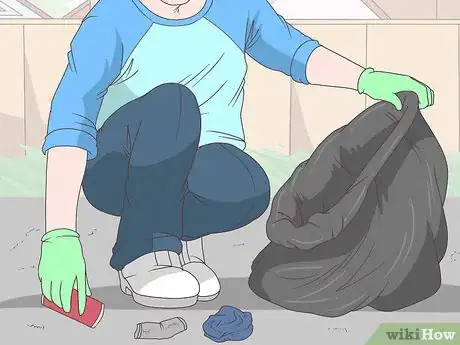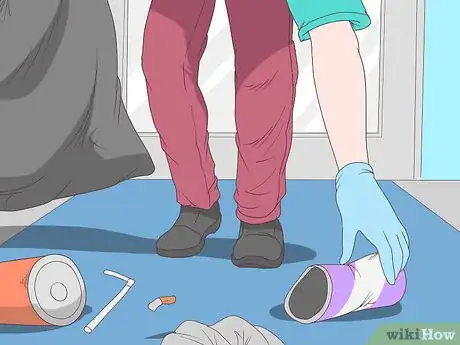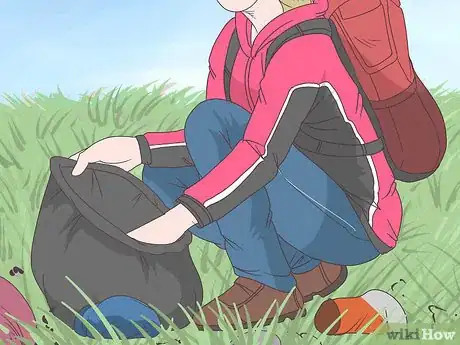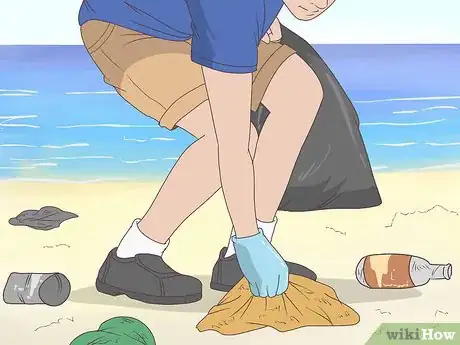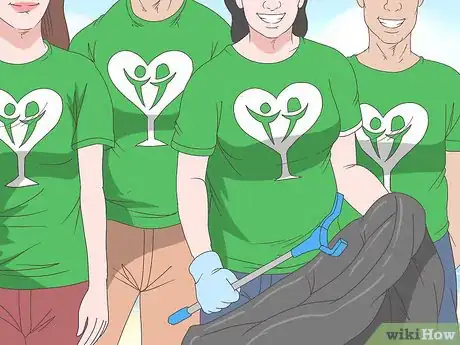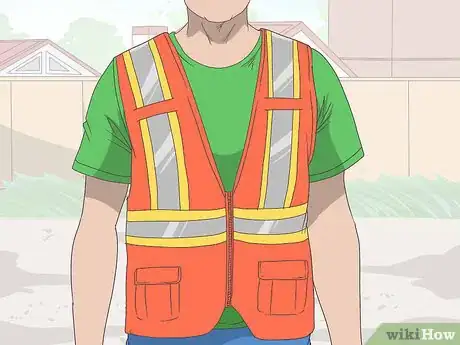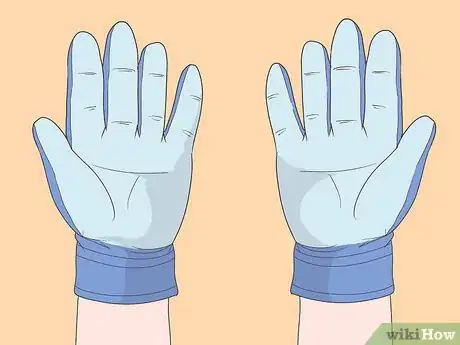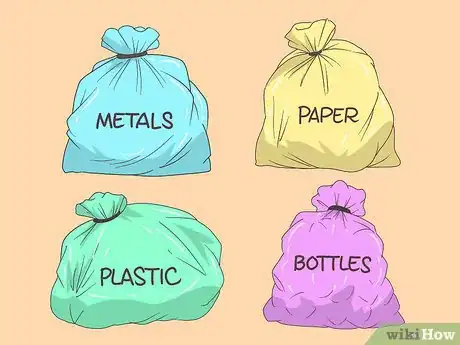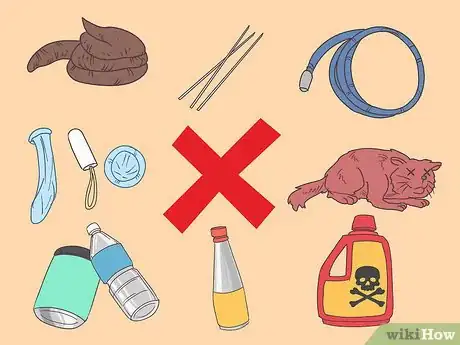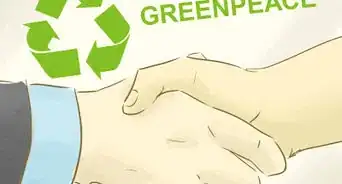This article was co-authored by April Jordan. April Jordan is a Sustainability Specialist and the Founder of The Ethical Edit, a blog dedicated to making ethical fashion and lifestyle changes accessible by sharing easy-to-digest sustainability information and ethical and sustainable brand reviews. With over five years of experience in sustainability and over five years in the marketing and communications field, April is passionate about using her skills to make the world a better place.
There are 13 references cited in this article, which can be found at the bottom of the page.
This article has been viewed 138,011 times.
Litter is a threat to wildlife and public health. If you want to make a difference in your community, take it upon yourself to pick up trash and waste around your city. Choose a location that you feel is most affected by litter. Then, gather the necessary materials, such as trash bags, a pick-up stick, and a safety vest. To make your pick-up day successful, sort the litter you find for recycling. Every little bit counts when you do your part to keep your area clean!
Steps
Choosing a Location for Litter Cleanup
-
1Pick up litter on the roadways to keep streets safe. U.S. roadways are littered with a variety of waste, with the most common trash items being tobacco products (cigarette butts), paper, and plastic. Highways, roadways, and side streets are all common litter sites because motorists tend to throw trash and waste out of vehicle windows. Litter on the streets can be a safety hazard, as waste can damage cars that drive over it, blow into motorists' windshields, or even catch fire.[1]
- Always use extreme caution when picking up trash on roadways– never pick up litter in the middle of the street. Wear safety vests and only pick up in the daytime so that you are clearly visible to motorists.
-
2Remove litter near transition points to keep businesses and public services tidy. Transition points include entrances to businesses or public services that prohibit certain items, like movie theaters, stadiums, or buses. The most common trash found by transportation points are confections (candy and gum) and cigarette butts. Heavily populated retail areas by shopping centers and convenience stores also create a lot of opportunities for littering.
- Always ask permission from the store owner or manager before proceeding if picking up litter in front of a privately owned business.
Advertisement -
3Look for litter in recreational areas while camping or hiking. Places where people congregate for leisure, such as parks and beaches, accumulate litter very quickly. Choose to pick up litter in these recreational areas to keep them looking nice and welcoming for locals and tourists– and to protect surrounding wildlife!
- Ocean trash is a serious problem that can not only affect that appearance of our public beaches but can also affect the health of people and wildlife. If you plan on taking a trip to the beach, be prepared by bringing a couple of trash bags along with you to pick up excess garbage.
-
4Prevent litter from polluting our oceans by picking up trash near storm drains. Storm drains are designed to drain excess rain from our streets. Excess litter can block the drains, causing streets to flood. When trash gets into the drains, it can end up washing up on beaches or in our oceans. The most common items found by storm drains are cigarette butts, food wrappers, and plastic bottles.[2]
- Only remove surface debris from a storm drain using gloves or a rake. Never reach your hand in the catch basin or attempt to remove a grate.[3]
- Do not attempt to clear the drain when there is standing water. It can carry disease and be a breeding ground for mosquitos.
-
5Join a volunteer organization to clean up litter in your neighborhood. Conduct a Google search to find volunteer litter pickups in your area. Some cities conduct annual neighborhood cleanups in designated areas. You can also volunteer for roadway trash pickup programs such as Adopt-A-Highway or Sponsor-A-Highway.[4] This is a great way to keep your city clean with the help of your neighbors and friends.
- Cleaning up litter in groups is recommended, and can ultimately accomplish a lot more cleaning. Advertise the event on social media to get more people involved.
Using Necessary Tools and Safety Materials
-
1Use a litter pick-up stick to pick up trash from the ground. One of the handiest tools for the trash removal is a pick-up stick. It is designed so you can grab the trash without bending down or touching it with your hands. Some sticks have a lever to open and close a clamp that grabs the trash, while others have sharp metal parts that pierce the trash and lift it off of the ground.[5]
- Look online to find the best pick up stick that meets your litter cleanup needs.
- Using a pick-up stick will allow you to pick up sharp or hazardous[6] objects safely.
-
2Wear a reflective safety vest near roadways to increase your visibility. Safety vests come in bright fluorescent colors, such as yellow, green, or orange. Vests with reflective strips increase your visibility and help you stand out against your surroundings. It is very important that you wear this clothing at all times when collecting litter near roadways. The bright and reflective colors will alert motorists that people are working nearby.[7]
-
3Carry multiple trash bags to collect and sort all of the litter. When picking up trash, you’re going to need something to put it all in. You may come across garbage or recycling bins, but in the event that you don’t you’ll need to carry multiple heavy-duty trash bags with you during your pickup.[8]
- Purchase a bag handle or holder online that will make carrying multiple bags more convenient.
-
4Wear sturdy gloves to protect your hands. When picking up litter, it is recommended that you wear thick, gardening gloves. If you come across something that your pick-up stick is unable to grab, you may need to pick it up with your hands. Gardening gloves will protect your hands from germs and bacteria or anything sharp.[9]
Picking Up the Litter
-
1Dress appropriately for the weather. Since you’re going to be outside for a good percentage of the day, pay attention to the weather forecast. If the sun is out and you live in a warm climate, make sure to wear sunglasses and a hat to protect your face and neck from sun damage.[10]
- Always wear close-toed shoes to protect your feet no matter what the weather.
- Wear bug repellant to avoid mosquito bites while you’re picking up litter.
-
2Use multiple bags to sort litter for recycling. When cleaning up trash, it is important to recycle in order to reduce the amount of waste in our environment. Many items are recyclable but should be placed in separate recycling bins. You can use 4 trash bags as you clean to separate litter into the following categories: metals, paper, plastic, and bottles.[11]
- Metals include things like soda cans, soup cans, foil, and bakeware.
- Paper products should include cardboard, magazines, newspapers, and juice cartons.
- Plastic should only be recycled if it is clean. If you find plastic bottles with liquid inside, even if it’s just a small amount, throw it away in a garbage bin. Plastic bags also should not be placed in recycling bins.[12]
-
3Avoid and report hazardous materials. Certain waste products should be avoided when you’re picking up litter, as they may be harmful. If you see any of the following items, do not pick them up. Instead, report them to the local council or landowner:[13]
- Needles
- Human waste
- Personal hygiene products (condoms, tampons, etc.)
- Electrical items
- Dead animals
- Bottles of liquid
- Unlabeled bottles
- Potentially dangerous chemicals
Expert Q&A
Did you know you can get expert answers for this article?
Unlock expert answers by supporting wikiHow
-
QuestionAre there any precautions to take before I go on a beach cleanup?
 April JordanApril Jordan is a Sustainability Specialist and the Founder of The Ethical Edit, a blog dedicated to making ethical fashion and lifestyle changes accessible by sharing easy-to-digest sustainability information and ethical and sustainable brand reviews. With over five years of experience in sustainability and over five years in the marketing and communications field, April is passionate about using her skills to make the world a better place.
April JordanApril Jordan is a Sustainability Specialist and the Founder of The Ethical Edit, a blog dedicated to making ethical fashion and lifestyle changes accessible by sharing easy-to-digest sustainability information and ethical and sustainable brand reviews. With over five years of experience in sustainability and over five years in the marketing and communications field, April is passionate about using her skills to make the world a better place.
Sustainability Specialist Keep an eye out for any sharp objects on the beach—it's a good idea to have a trash picker handy so you can stay safe if you're picking up the litter. You'll also want to consider the weather and the time of day you're going out—if you walk out too far, you could get trapped on a sandbar or island as the tide comes in.
Keep an eye out for any sharp objects on the beach—it's a good idea to have a trash picker handy so you can stay safe if you're picking up the litter. You'll also want to consider the weather and the time of day you're going out—if you walk out too far, you could get trapped on a sandbar or island as the tide comes in. -
QuestionWho is responsible for picking up litter?
 Community AnswerEveryone. Picking up litter is part of being a good citizen. If you are walking through a street and you see a bag floating through the air, pick it up and fill it with other trash you find. If you see a full bottle of water on the side of the road, make sure you have gloves on unless the bottle is empty, then pick it up then put it in recycling.
Community AnswerEveryone. Picking up litter is part of being a good citizen. If you are walking through a street and you see a bag floating through the air, pick it up and fill it with other trash you find. If you see a full bottle of water on the side of the road, make sure you have gloves on unless the bottle is empty, then pick it up then put it in recycling. -
QuestionWhat is the best kind of container to carry the litter in? Where should I dispose the litter if I do not have a vehicle?
 DvortygirlCommunity AnswerThat depends on how far you go and how much litter you're finding. A five-gallon bucket can be a good choice. You can often get empty paint buckets for free. A sturdy bag is another choice, you can fold them compactly and carry them with you when you go out. It may be easiest to dispose of one or two small items in a public litter bin, if one is available. Parks, shopping centers, and transit stops are good places to look. For larger quantities, contact your city or local government and ask whether they'll send someone to collect bags. Some cities offer litter cleanup tools to volunteers, too.
DvortygirlCommunity AnswerThat depends on how far you go and how much litter you're finding. A five-gallon bucket can be a good choice. You can often get empty paint buckets for free. A sturdy bag is another choice, you can fold them compactly and carry them with you when you go out. It may be easiest to dispose of one or two small items in a public litter bin, if one is available. Parks, shopping centers, and transit stops are good places to look. For larger quantities, contact your city or local government and ask whether they'll send someone to collect bags. Some cities offer litter cleanup tools to volunteers, too.
Warnings
- Use caution when working on roadways. Work during the day so cars passing are able to see you, and never pick up trash in the middle of the street.⧼thumbs_response⧽
- Be very careful when picking up sharp objects. You should always wear sturdy gloves, or avoid picking up objects with your hands altogether by using a pickup stick.⧼thumbs_response⧽
- Don’t pick up hazardous materials, such as razor blades, syringes, animal carcasses, and condoms.[14]⧼thumbs_response⧽
- Don't pick up broken glass or plastic with your bare hands. If you do so, you may get cut. Wear gloves when handling such material.⧼thumbs_response⧽
- Always wash your hands after picking up litter. Bacteria thrives on food and garbage, which can make you extremely ill.⧼thumbs_response⧽
- Be mindful of the weather and tides when you're picking up trash on the beach—in some places, you could be trapped as the water rises at high tide.[15]⧼thumbs_response⧽
References
- ↑ https://ecology.wa.gov/Waste-Toxics/Solid-waste-litter/Litter
- ↑ https://www.epa.gov/trash-free-waters/learn-about-aquatic-trash
- ↑ https://www.dickinson.edu/download/downloads/id/7331/volunteer_handoutpdf.pdf
- ↑ https://adoptahighway.net/
- ↑ https://youtu.be/r1H5ZnKNbbo?t=8
- ↑ April Jordan. Sustainability Specialist. Expert Interview. 22 September 2020.
- ↑ https://youtu.be/sxlUXVOhM8s?t=27
- ↑ https://www.wildlifetrusts.org/actions/pick-litter
- ↑ https://youtu.be/ZjNi5MCTl9g?t=55
- ↑ https://www.doinggoodtogether.org/bhf/clean-up-your-neighborhood
- ↑ https://www.wildlifetrusts.org/actions/pick-litter
- ↑ http://www.wm.com/thinkgreen/what-can-i-recycle.jsp
- ↑ https://www.seattle.gov/util/cs/groups/public/@spu/@conservation/documents/webcontent/spu01_003717.pdf
- ↑ https://www.manassascity.org/2294/Litter-Clean-up-Safety-Tips
- ↑ April Jordan. Sustainability Specialist. Expert Interview. 22 September 2020.
